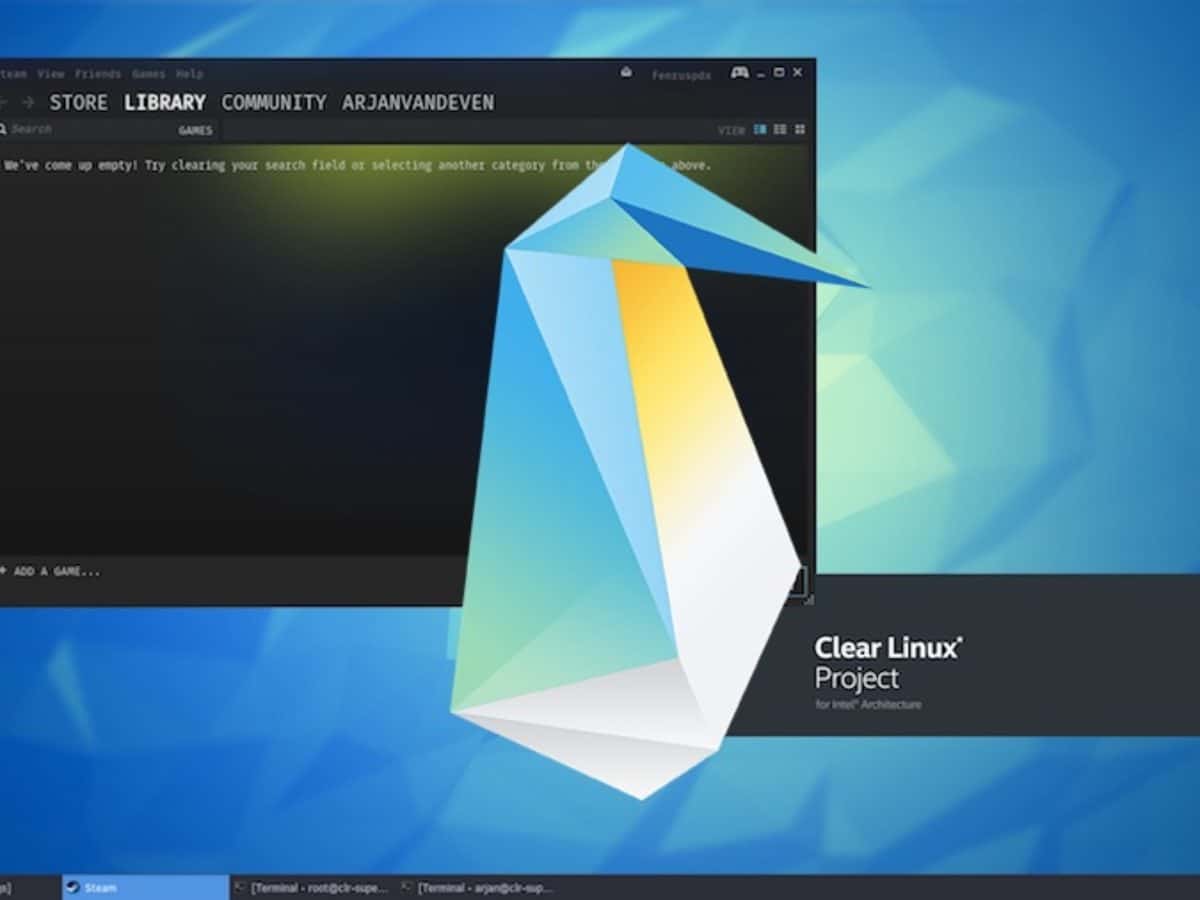
The developers of the Clear Linux distribution have announced a change in the project development strategy, since now the main development directions are servers and cloud systems while the components of the edition for workstations will take a back seat.
Desktop package delivery will continue, but in these packages initial versions of user environments will be offered, without specific plugins and changes from Clear Linux. In particular, GNOME packages will continue to be generated, but the composition and configuration of the desktop will correspond to the reference type, which the GNOME project proposes by default.
Previously, the distribution was offered with its own decoration theme, a separate icon set, and the ability to pre-install third-party GNOME Shell plugins and GNOME settings.
We made this effort based on the information we had a while ago when we were waiting. Today we look forward again and see that things have changed for the Clear Linux OS team - we still want to attract developers, but we are not as interested in supporting a diverse and complex desktop environment, or even multiple environments desktop.
Clear Linux is developed by Intel and provides strict application isolation They use separate containers through full virtualization.
The basic part of the distribution It contains only the minimal set of tools for launching containers and is atomically updated. All applications are designed as packages or Flatpak (Bundle) packages that run in separate containers.
In addition to custom desktops, the developer publisher dstaked out by expanded hardware support, integration of a FUSE-based debugging system, the incorporation of a new installer and the presence of an application catalog in which kits were proposed to implement development environments using various languages and technologies.
Of the key features Clear Linux stands out:
- Binary distribution model: patching a running system and completely updating the system by installing a new image on a separate Btrfs snapshot and replacing the active snapshot with a new one;
- Aggregation packages in sets: forming the finished functionality, regardless of how the software components form.
- An efficient system for installing updates- Integrated into the base of the distribution and providing accelerated delivery of updates with the correction of critical problems and vulnerabilities.
- Unified version system- The distribution version represents the status and versions of all the components included in it.
- The stateless approach to defining settings: implies that the different classes of configurations are separated, the system does not save their state and after installation does not contain any configuration in the / etc directory, but generates configurations on the fly based on the templates specified at startup.
- Using full virtualization to launch containers: allows a high level of security.
With that in mind, we've decided to streamline our content offerings with a bias towards cloud and server use cases. We found that it is still critical for developers that we deliver real optimized components not related to desktops, i.e. cloud and server workloads. This is absolutely where things are most important: being able to develop, deploy, and operate those workloads.
In the ad also It is mentioned that the planned changes will not start immediately, but it will be gradually and that the changes will be noticeable in a period of about 3 months.
It is also mentioned that next week it is planned to update the packages with the desktop to GNOME 3.36, which will correspond to the GNOME reference environment, after which the "desktop-assets-extras" package will be moved to the deprecated category.
If you want to know more about it, You can check the details in the following link.